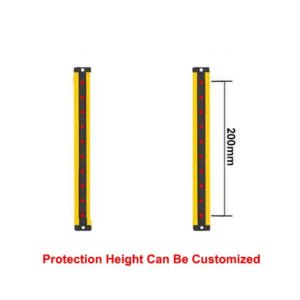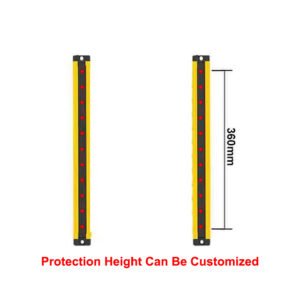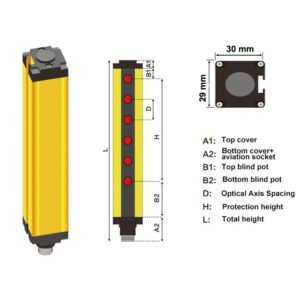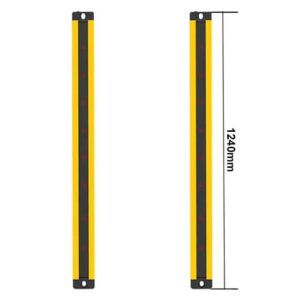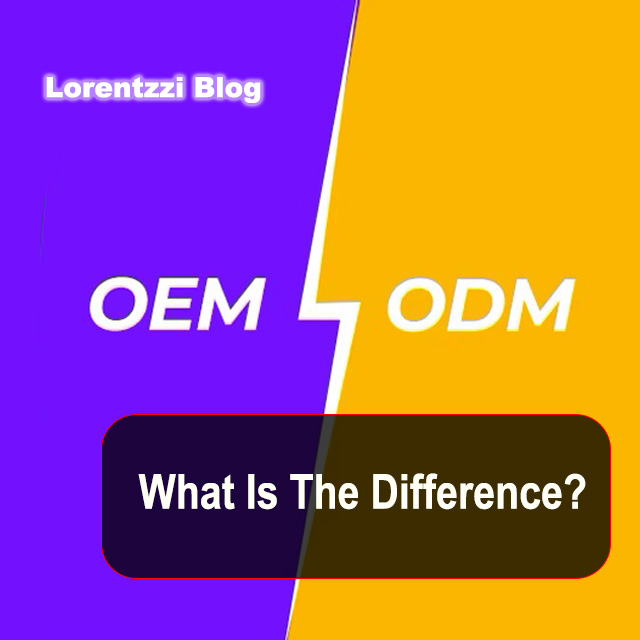Safety light curtains play a very vital role in the industrial automation industry for protecting workers from injury.
In today’s article, we will explain from 5 aspects: what a safety light curtain is, how to choose a suitable safety curtain for your applications, advantages and disadvantages, types, and compliance and standards.
What is a safety light curtain?
A Safety light curtain is a photoelectric safety protector that protects people from dangerous machines such as presses, robotic cells and assembly lines.
It is also known by other names such as light curtain, optical guard, presence sensing device, etc.
It consists of two parts, one is the transmitter and the other is the receiver.
There are many infrared beams between the transmitter and receiver, and the two parts will form an invisible barrier.
Once the obstacle is blocked by objects such as human fingers, arms or bodies, the machine will stop running.
Video Courtesy: https://www.galco.com/
How to choose a light curtain?
To choose the right safety light curtain for your application, we need to consider and understand six technical terms: number of beam axes, beam axis spacing, resolution, protective height, overall height, and protective distance.
We will explain each one and show you step by step how to choose the right safety light curtain.
Step 1: Decide the optical axes numbers
The Number of optical axes is the number of axes formed by the emitter and receiver of the safety light curtain.
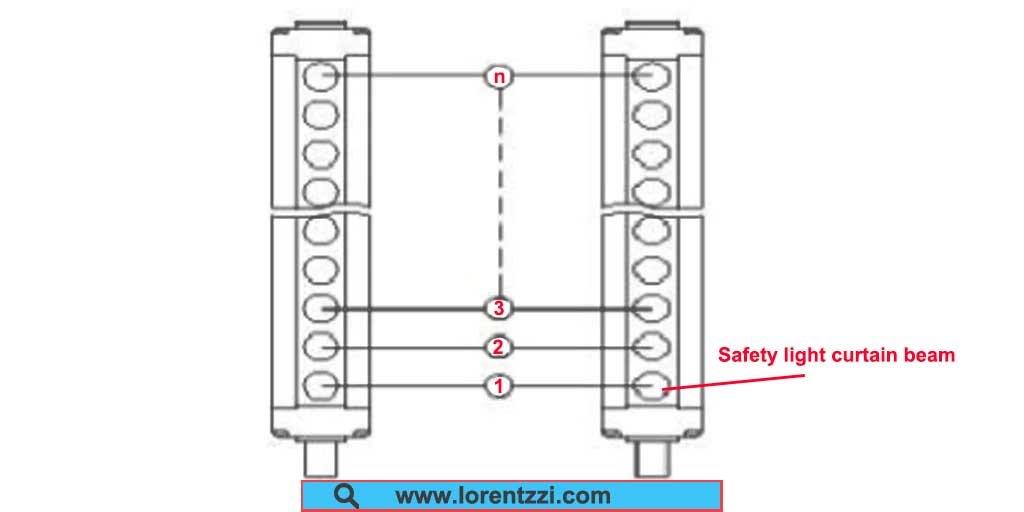
Step 2: Decide the optical axes Spacing
Optical axis spacing is the distance between two optical axes is called the optical axis spacing.

Step 3: Confirm the optical axes resolution
Resolution refers to the minimum diameter of an object that can be reliably detected by the safety grating.
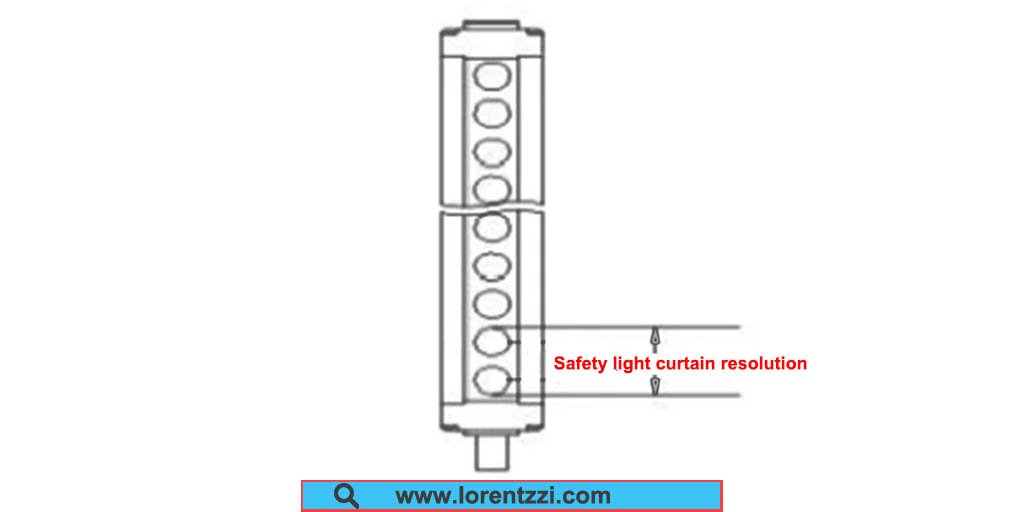
Step 4: Confirm the protection height
Protection height is the distance from the bottom to the top of the effective protection range of the grating.
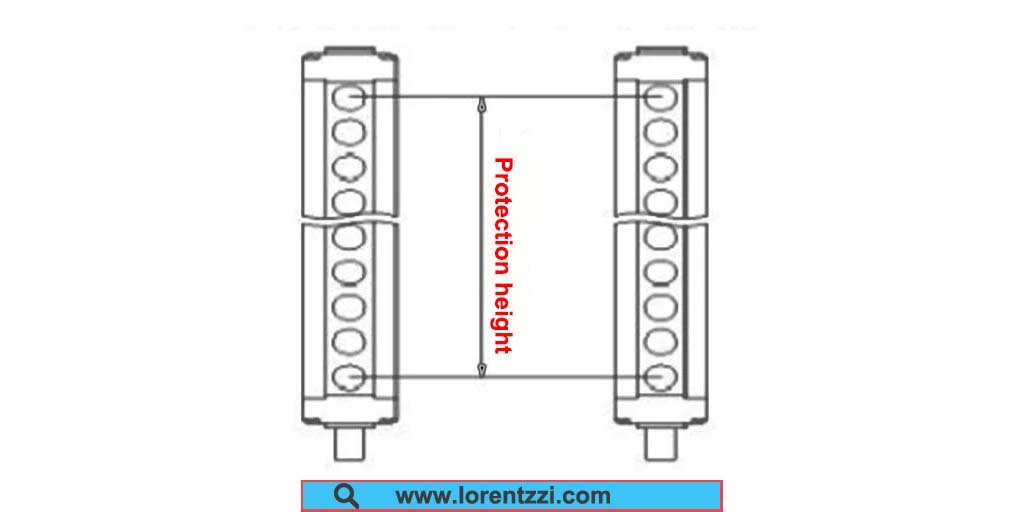
Step 4: confirm the total safety light curtain height
Total height is the distance from the bottom to the top of the grating.

Step 5: confirm the total safety light curtain protection distance
Protection distance is the farthest distance of the grating from the transmitting end to the receiving end

By knowing the above technical terms, it is easy for us to choose the right safety light curtain now.
Advantage and disadvantages of a safety light curtain
Advantages:
- Protecting people from harm, reducing risks, and on the other hand, saving money.
- Easy to install and maintain.
- It is suitable for small spaces. Since the protection height can be any height, for small spaces, we can choose a safety grating with a small number of optical axes.
- High reliability.
- Strong anti-interference ability.
Disadvantages:
- The cost might be a little higher and it is not so acceptable for companies on tight budgets.
- May lose effectiveness due to external factors such as bright light, dust, or moisture
- Frequent cleaning and maintenance are required.
- Unable to prevent accidental falling objects.
Types of safety light curtain sensor
Safety light curtains are classified according to their resolution, which is the size of the object that can interrupt the light beam.
They range from finger protection (small resolution, generally optical axis spacing is 10 mm), arm protection (middle resolution, which optical axis spacing is 20 mm) to body protection (large resolution, spacing is 40 mm).
Compliance and standards
Conclusion
Although safety light curtains are expensive to install, they are still a smart choice for protecting workers from accidents.
Lorentzzi® offers a wide range of different types of safety light curtains, all of which are high quality and affordable.
Contact us now for the latest prices!


